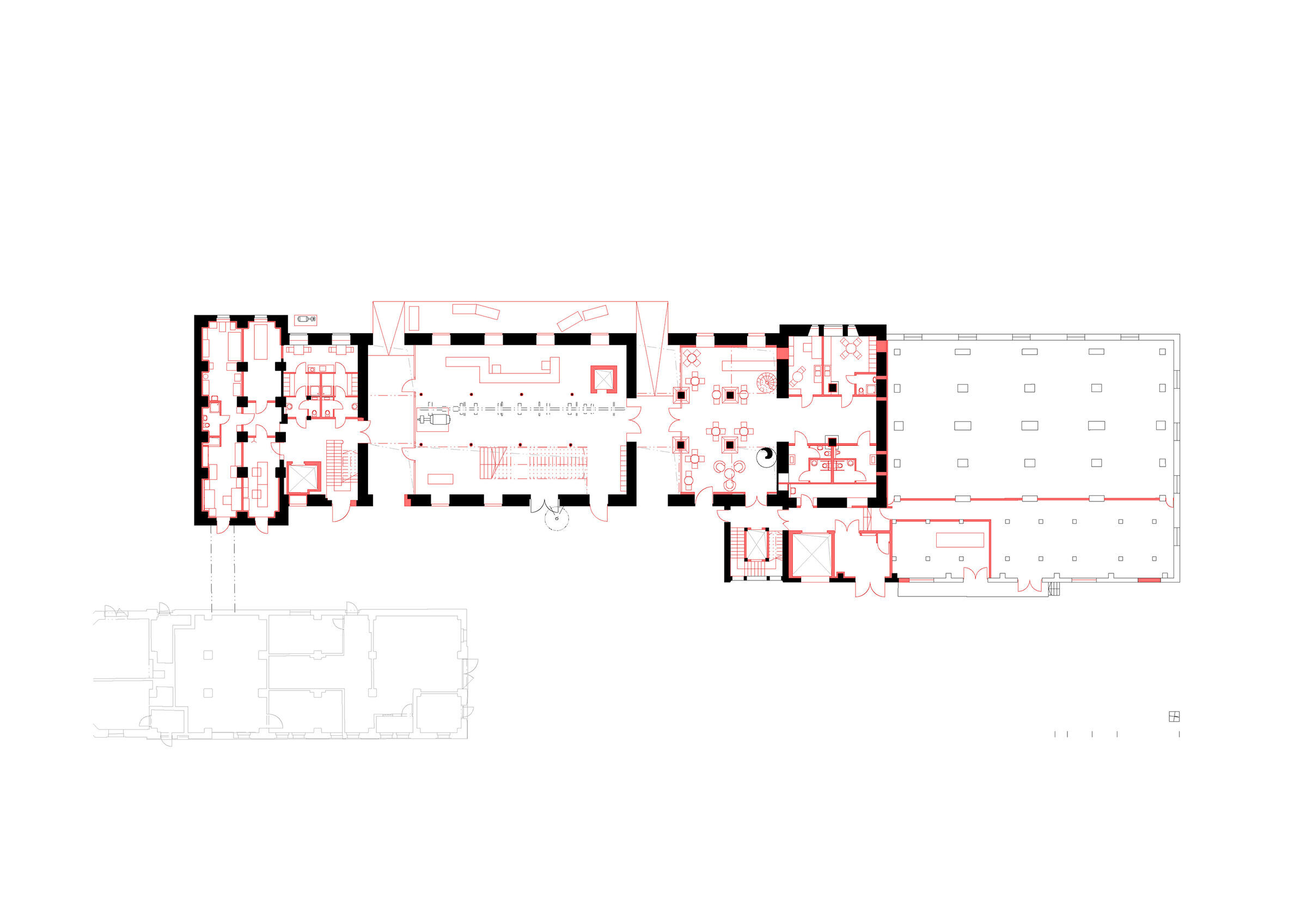From Pardubice Castle to Automatic Mills
The creation of the new headquarters for the Gočár Gallery was preceded by TRANSAT architekti's work on Pardubice Castle. Its transformation from a museum and gallery venue into an accessible "Pernštejn Residence" consisted of several projects as part of a master plan (TRANSAT architekti, 2017, supervised by Ladislav Lábus and Josef Pleskot). One of the plan's recommendations was to relocate the regional gallery, housed in the castle's outbuildings, to another site — ideally, the Automatic Mills building designed by influential Czech architect Josef Gočár. The choice of Gočár’s building was based on several factors: primarily its riverside location near the city center, its large interior spaces, and its exceptional architecture, which led to its designation as a national cultural monument.
In 2015, the mill was purchased by architect Lukáš Smetana who teamed up with architect Zdenek Balík to create an urban plan for the location. The Pardubice Region acquired the building from Smetana in 2018 with several projects in the works, including a craft and technology education center (Sféra) and a new space for the City Gallery Pardubice (GAMPA).

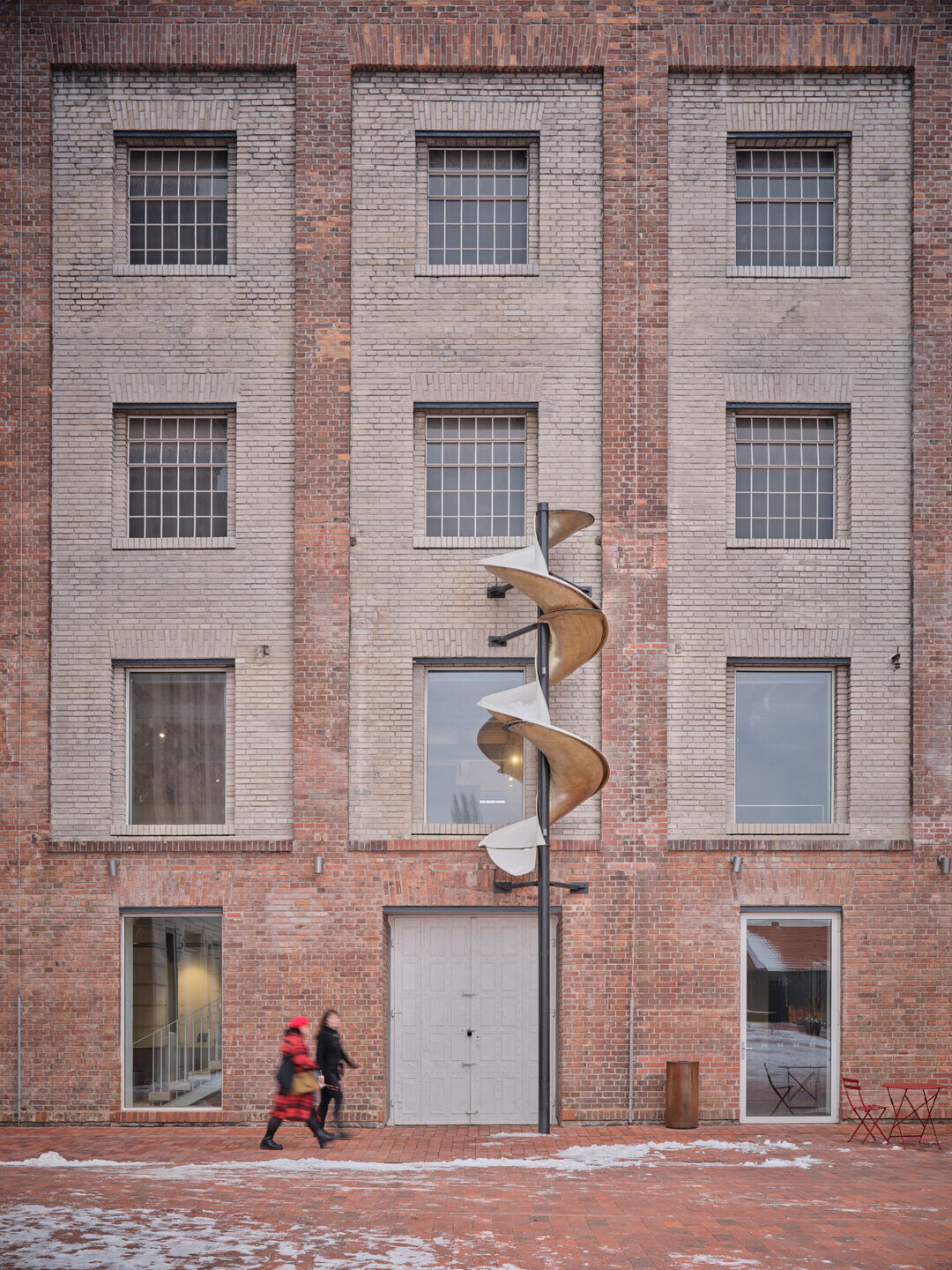
Original architecture
The main mill building’s imposing exterior is relatively deceiving, as its interior spaces are surprisingly narrow and not particularly spacious. The mill’s structural module is relatively small, measuring primarily 4 by 4 meters. Its original layout, operational logic, and construction were based on a sequential arrangement of vertical spaces: deep grain silos at the main southern facade, a grain cleaning area and staircase, the main milling hall with roller mills and sifters, and the bran storage and flour warehouses.
The milling technology, originally supplied by the Pardubice-based company Josef Prokop & Sons, had largely been removed by the time the renovation project commenced, leaving only a few elements preserved as examples.
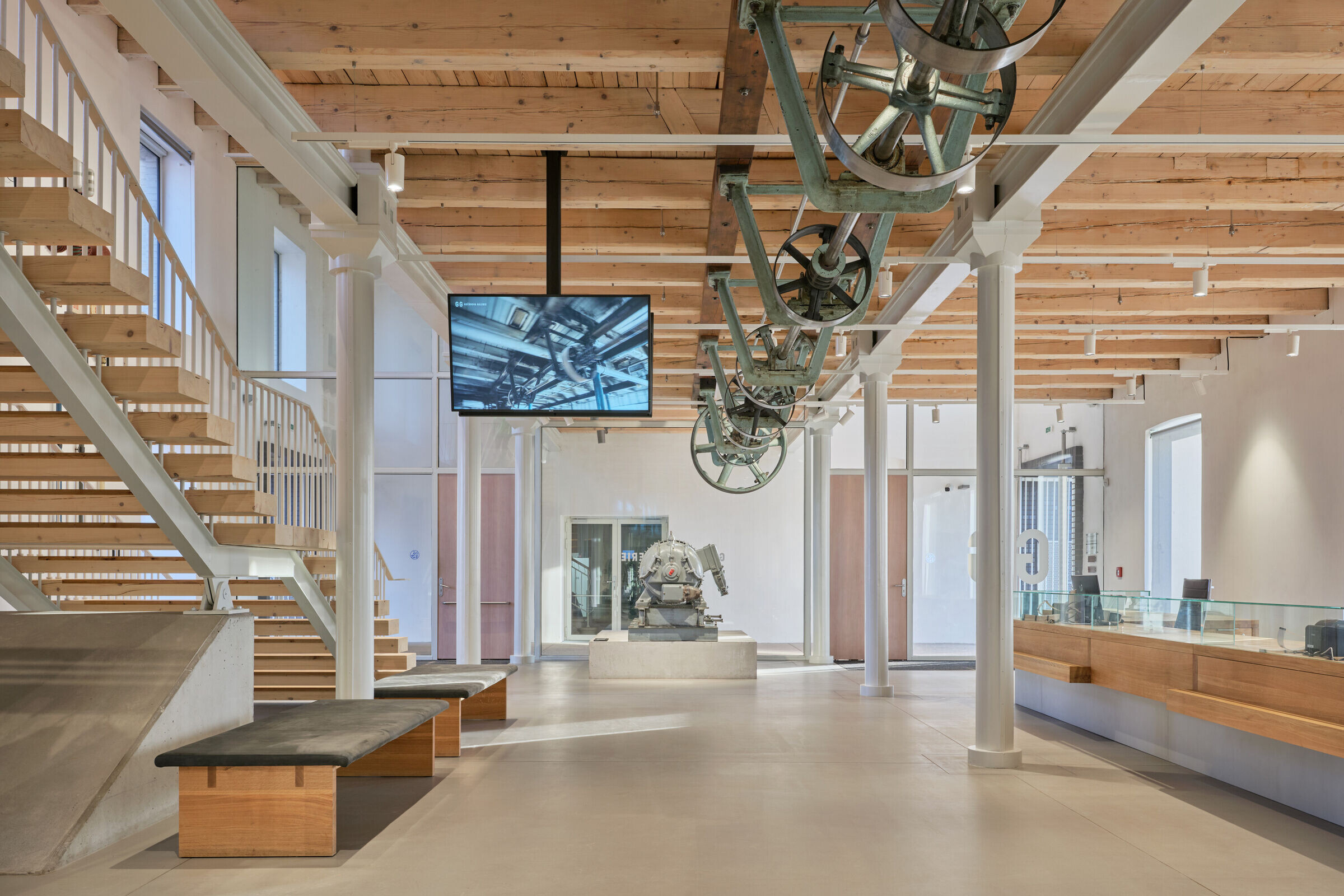

Conversion into a contemporary gallery
The conversion of the unheated industrial mill building into an art gallery with a significant collection necessitated the creation of a secure and stable interior, one that meets the stringent requirements of art lenders and ensures operational efficiency.
TRANSAT architekti based the gallery’s spatial layout on the mill’s original composition, arranging its various functions in a linear sequence of vertical spaces. Visitor movement is concentrated in the five-story milling hall, which retains its original wooden ceilings supported by a subtle steel frame, and in the adjacent southern part of the building. Collection storage and workspaces are located in the section with reinforced concrete interior structures, which connects to the milling hall on the northern side.
In several places, the spatial layout has been opened up with vertical connections between floors. This is an intentional, newly articulated spatial reference to what was once characteristic of the mill. The floor and ceiling heights increase as the building rises from the ground floor to the third and fourth floors, where temporary exhibition halls and a multifunctional hall are located.
On the city-facing side of the mill, TRANSAT architekti preserved the floors and windows in the exhibition spaces. On the courtyard-facing side, the studio removed several floors and sealed windows on the interior, creating uninterrupted exhibition walls — here, the exhibition space spans almost ten meters in height across the third and fourth floors.
An imaginary vertical section cuts through the milling hall, channeling daylight from new skylights across three floors.
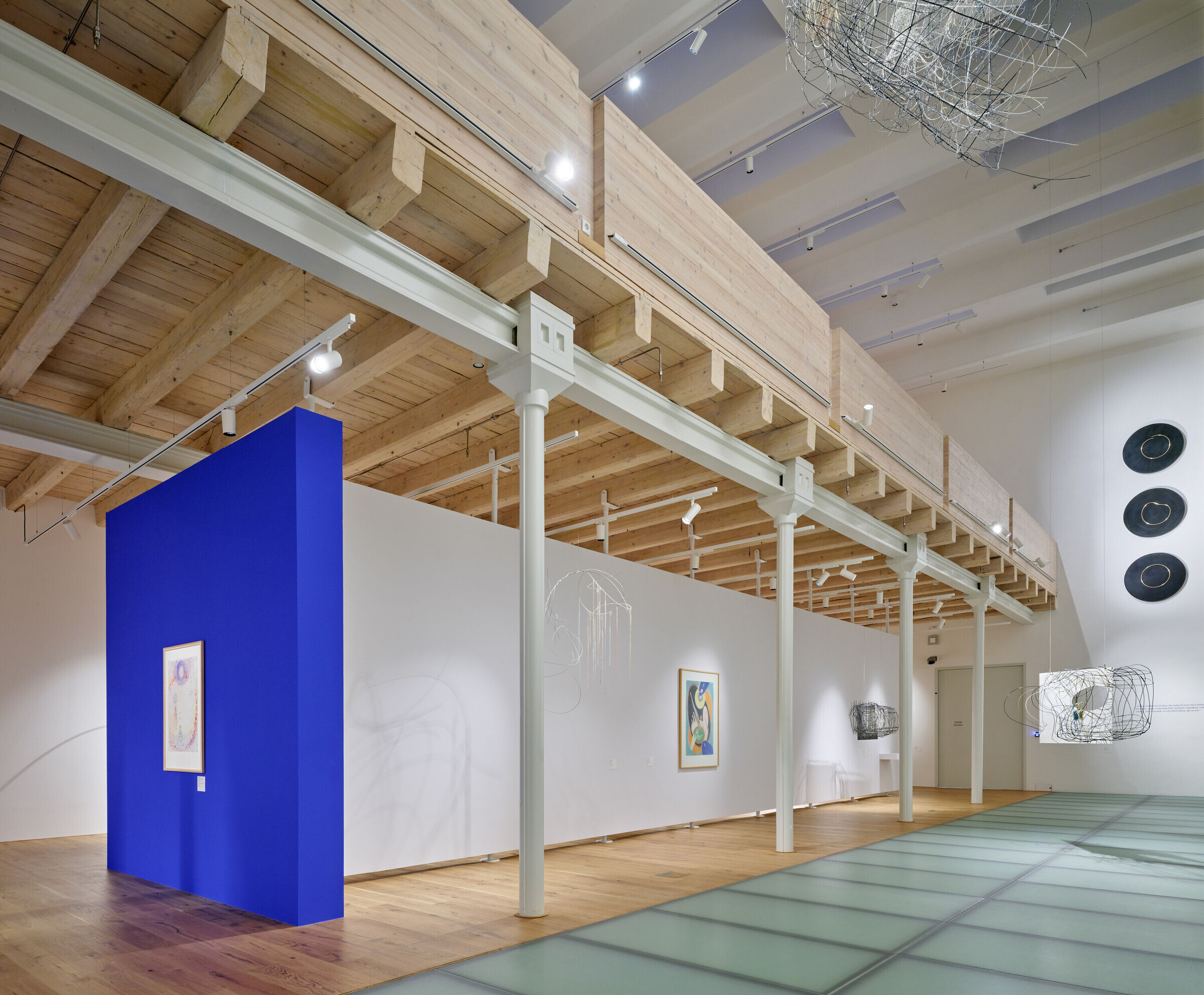

Public space
The arrangement of adjacent public spaces — the riverfront, courtyard, and a new square — is important for the gallery's life. The complex is accessed from the new square via Gočár’s symbolic gateway between the main building and grain silo building. Originally, entrances to the individual buildings were oriented toward the courtyard, in line with the operational needs of the mill. To transform this former yard into a true urban public space, it was linked to the riverfront by two new passageways on the gallery’s ground floor. The former milling hall, positioned between the two passageways, now serves as the gallery’s entrance hall, while the northern passage is completed by a café. This design allows visitors to enter the building’s central axis directly from the exterior. Exhibition spaces are accessed from a mezzanine in the entrance hall, bridging both passageways.


Preservation and technical upgrades
Vertical communication is provided by two historic staircases: Gočár’s original stone staircase from 1910 – 11 (this was relocated in the 1940s and has been restored to its original location) and a concrete staircase from the 1950s, located in the former flour silo. Both staircases are complemented by elevators.
The renovation preserves the original structural system as much as possible, which includes exposed brickwork, steel, wood, and concrete. The striking spaces of the former milling hall are supported by the original steel structure, which, due to fire safety regulations, had to be encased with steel covering. The original wooden ceilings are still visible, with minimal new utility installations. The wood from the original ceiling beams was repurposed to create a new staircase in the entrance hall. The facades were restored while preserving the appropriate level of patina.


The rooftops, which house climate control equipment, were recessed below the parapet level to maintain a clean silhouette. Double-glazed windows to the interior supplement the mill’s original windows, allowing controlled ventilation. Sun-responsive screen shades and blackout blinds have been fitted to the windows; the skylights are fitted with adjustable aluminum louvers to modulate sunlight.
The exterior’s volumetric composition has been stripped of later additions like transformer stations, sheds, and stair towers. Throughout both the exterior and interior, carefully preserved remnants of the original milling technology have been integrated into the design.
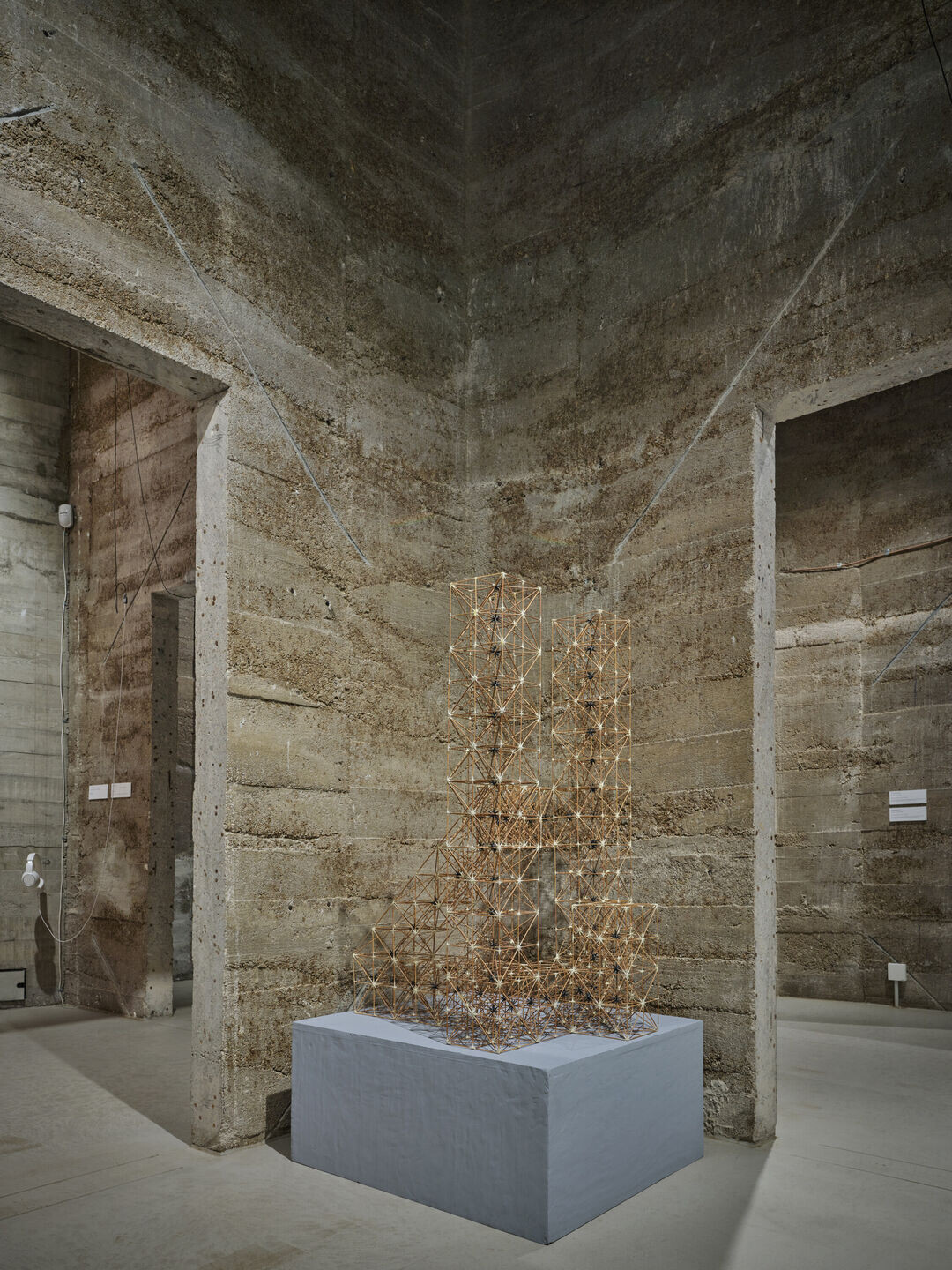
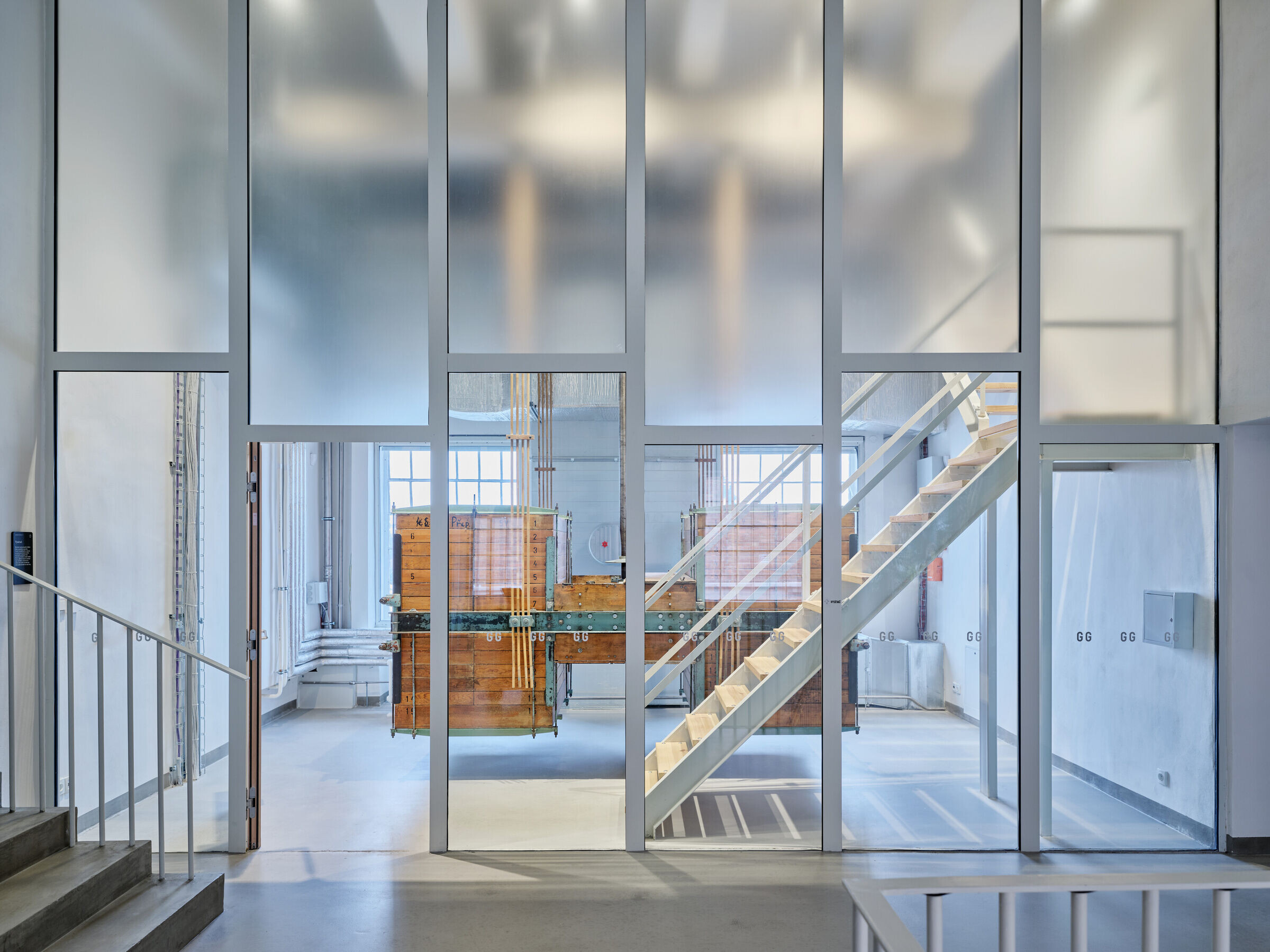
Team:
Client: Pardubice Region
Architects: TRANSAT architekti
Author: Petr Všetečka
Consultations: Josef Pleskot, Jan Žemlička
Structural engineering project: Stabil
Heating, cooling, and ventilation project: Optimal Engineering
Graphic design: Men at Work
Main construction contractor: Association for the Restoration of the Automatic Mills in Pardubice [Metrostav and Chládek & Tintěra]
Main interior contractor: Dřevozpracující výrobní družstvo Jaroměřice
Photographer: BoysPlayNice


Materials:
External wall structure: supplemented with exposed brick masonry and artificial stone
New passageway portals: fired bricks with an engobed surface
New underground structures: watertight concrete
Supplemented interior load-bearing structures: exposed reinforced concrete
Interior wall insulation: calcium silicate
Interior accumulation and exhibition plinths: fired ceramic whitewashed bricks, Sand-lime bricks in depositories
Roof insulation and beam support: foam glass
Roof skylights: custom aluminum profiles with dithermal glazing and aluminum Louvers with motorized control
New interior windows added to the historical ones: stainless steel profiles with Dithermal glazing and motorized control
Screen blinds between windows: polyester, custom-made, automated control
Interior partitions and doors: steel, safety glass, solid larch wood
Interior railings: steel, solid larch wood
Flooring: cement screeds, large-format oak planks
Entrance hall, exhibition, and library furnishings: solid oak, custom-designed
Event hall: acoustic wood-based wall cladding
Lighting supplier: Etna
Windows: Alglas,
Fire suppression system project: TRASER
Glass walls: BrightCon
Skylights: Alaris Czech Republic
Elevators: Tramontáž
Lights: iGuzzini
